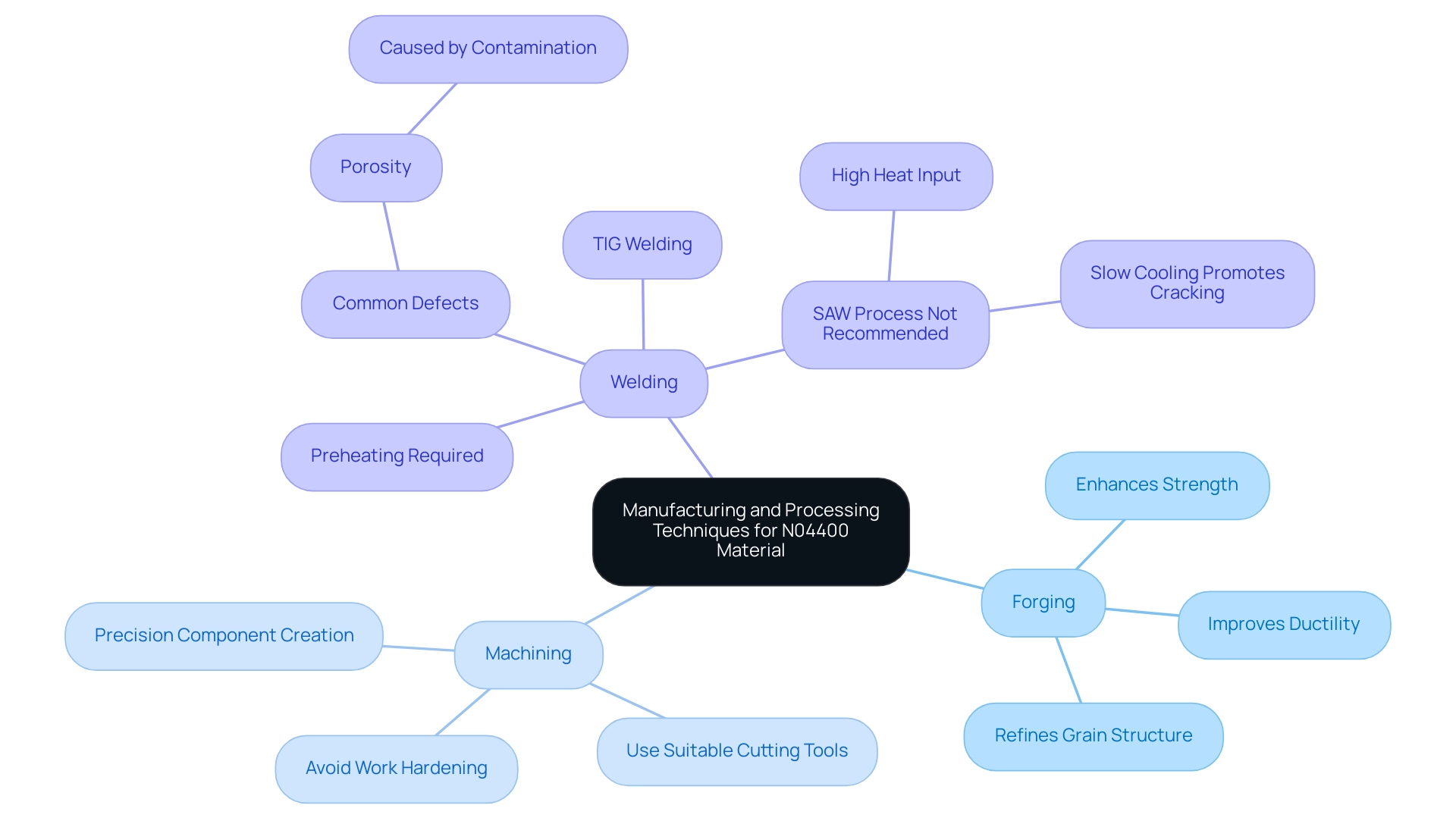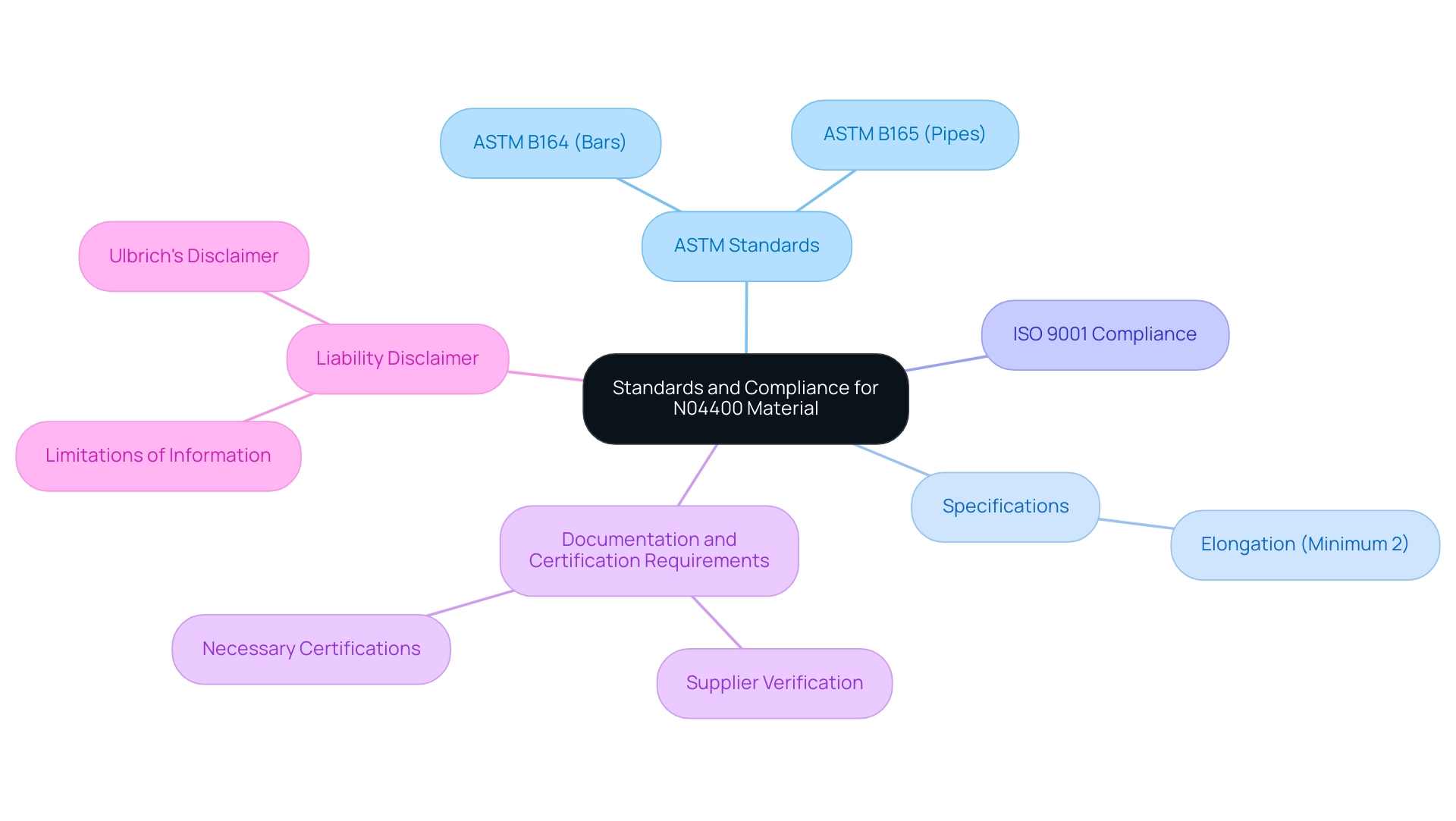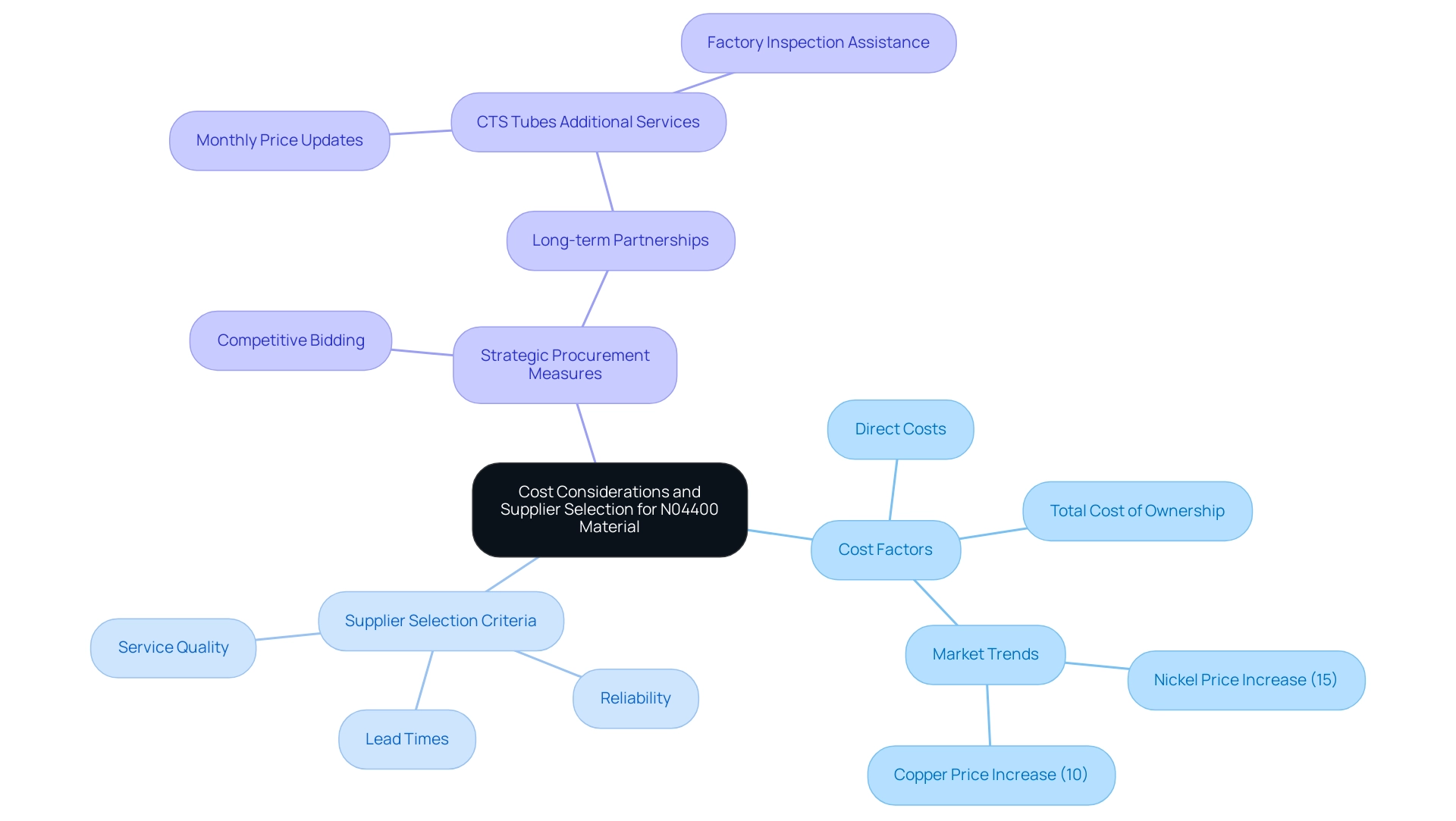Blogs

Understanding N04400 Material: An In-Depth Tutorial on Properties and Uses
Introduction
In the realm of advanced materials, N04400, commonly known as Monel 400, emerges as a formidable player due to its exceptional mechanical properties and corrosion resistance. This nickel-copper alloy, with its unique composition, is not only pivotal in industries such as oil and gas, aerospace, and marine engineering, but also plays a critical role in applications requiring robust performance under challenging conditions.
As procurement managers navigate the complexities of sourcing materials, understanding the multifaceted nature of Monel 400—from its composition and mechanical strength to its diverse applications and compliance standards—becomes essential.
This article delves into the key attributes of N04400, shedding light on its manufacturing processes, cost considerations, and the strategic insights necessary for effective supplier selection.
With a comprehensive exploration of these elements, stakeholders can make informed decisions that enhance operational integrity and drive long-term success.
Key Properties of N04400 Material: Composition and Mechanical Strength
The n04400 material, commonly known as Alloy 400, is a nickel-copper blend that is distinguished by its exceptional corrosion resistance and mechanical characteristics, making it a superb option for diverse uses. This alloy typically contains approximately:
- 67% nickel
- 28-34% copper
- Trace amounts of iron (max 2.5%), manganese, carbon, and silicon
Such a carefully balanced composition imparts exceptional tensile strength to the alloy 400, often exceeding 70,000 psi, while maintaining remarkable ductility.
Its mechanical robustness is maintained even at high temperatures, which is essential for challenging environments in sectors such as:
- Marine engineering
- Automotive
- Electrical fields
Alloy 400 exhibits outstanding resistance to a broad spectrum of corrosive environments, particularly in acidic and alkaline conditions, making it indispensable for sectors such as:
- Oil and gas
- Marine
- Chemical processing
Jonathan Muchuma raises an important consideration regarding the performance of the material in high radiation environments, particularly in concentrated electron beam usage.
For procurement managers, grasping these performance metrics is essential. The versatility of n04400 material has led to its extensive use in various applications, ranging from:
- Marine fixtures and pumps
- Chemical plant equipment
- Musical instruments
This showcases its adaptability and reliability in both industrial and consumer products. Browse our comprehensive product catalog at Domadia to discover the ideal copper nickel alloy solution for your project requirements, including the 400 grade and others tailored for diverse uses.
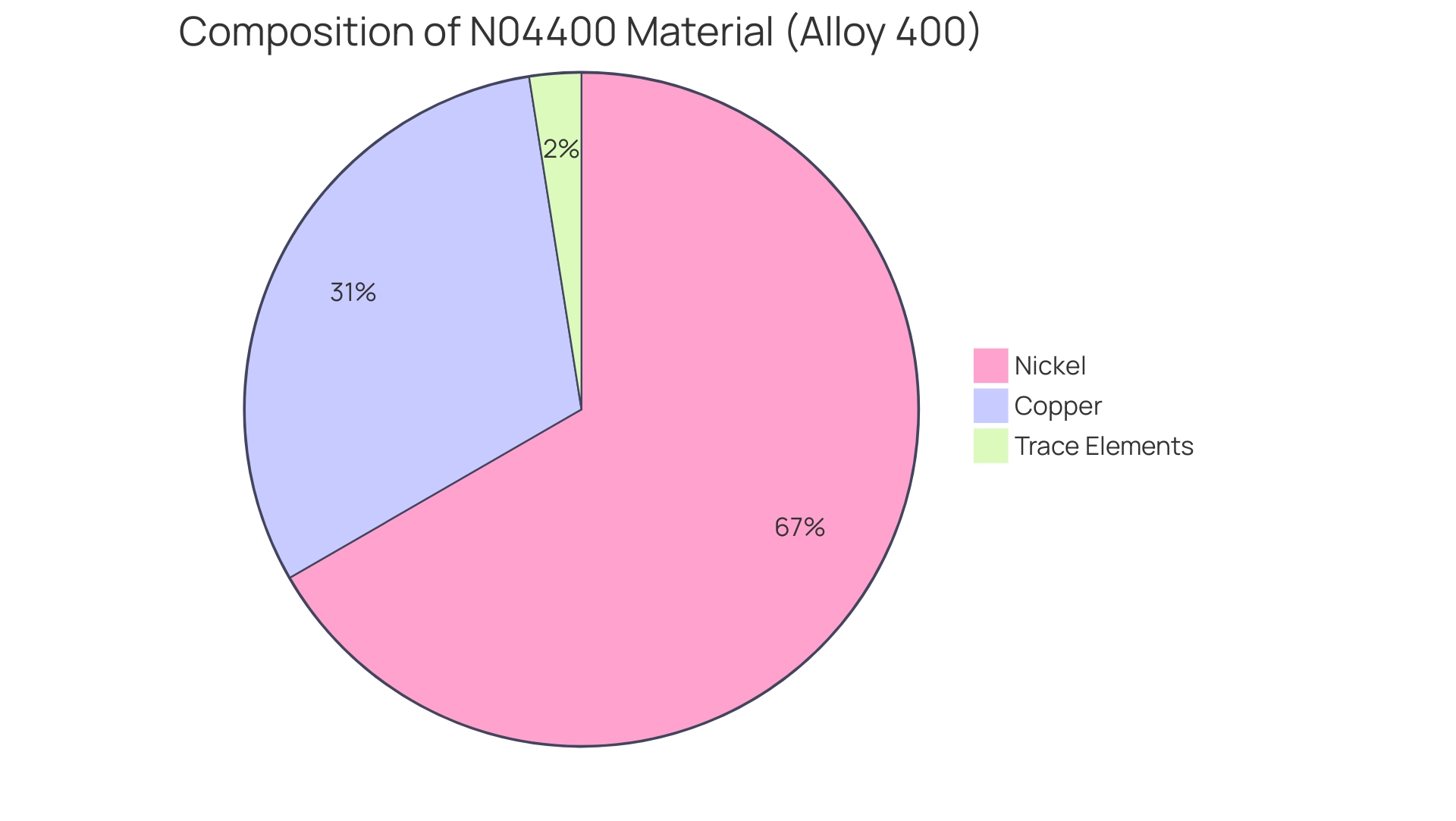
Applications of N04400 Material: Where and Why It’s Used
The n04400 material, often referred to as Monel 400, is famous for its remarkable characteristics that enable its extensive use in various industries. In the oil and gas sector, it is predominantly utilized in piping systems, valves, and fittings, designed to endure harsh corrosive environments. Its remarkable resistance to seawater corrosion makes it a preferred material for marine uses, including shipbuilding and offshore platforms.
Notably, recent developments in marine applications have showcased its adaptability and reliability in challenging conditions. Furthermore, in the aerospace sector, this alloy is integral to components demanding high strength and corrosion resistance, such as engine parts and fuel systems. The chemical processing sector also gains from this alloy’s capabilities, using it in the production of equipment that must function efficiently in acidic and caustic environments, thus ensuring durability and dependability.
The surface of laser-ablated alloy 400 is primarily composed of CuO (57.43%) and a trace quantity of Cu metal (1.90%), which underscores its unique properties. Additionally, using low laser fluences and low scanning velocities is advantageous for achieving reasonable ablation rates and efficiencies during processing. The versatility of n04400 material, along with its mechanical and corrosion-resistant properties, makes it an essential component in critical applications across these sectors.
As evidenced by the case study on ‘Nanoindentation Measurements on Monel Alloy 400,’ which provided insights into the local mechanical properties of the substance, its unique characteristics are instrumental in maintaining operational integrity and performance.
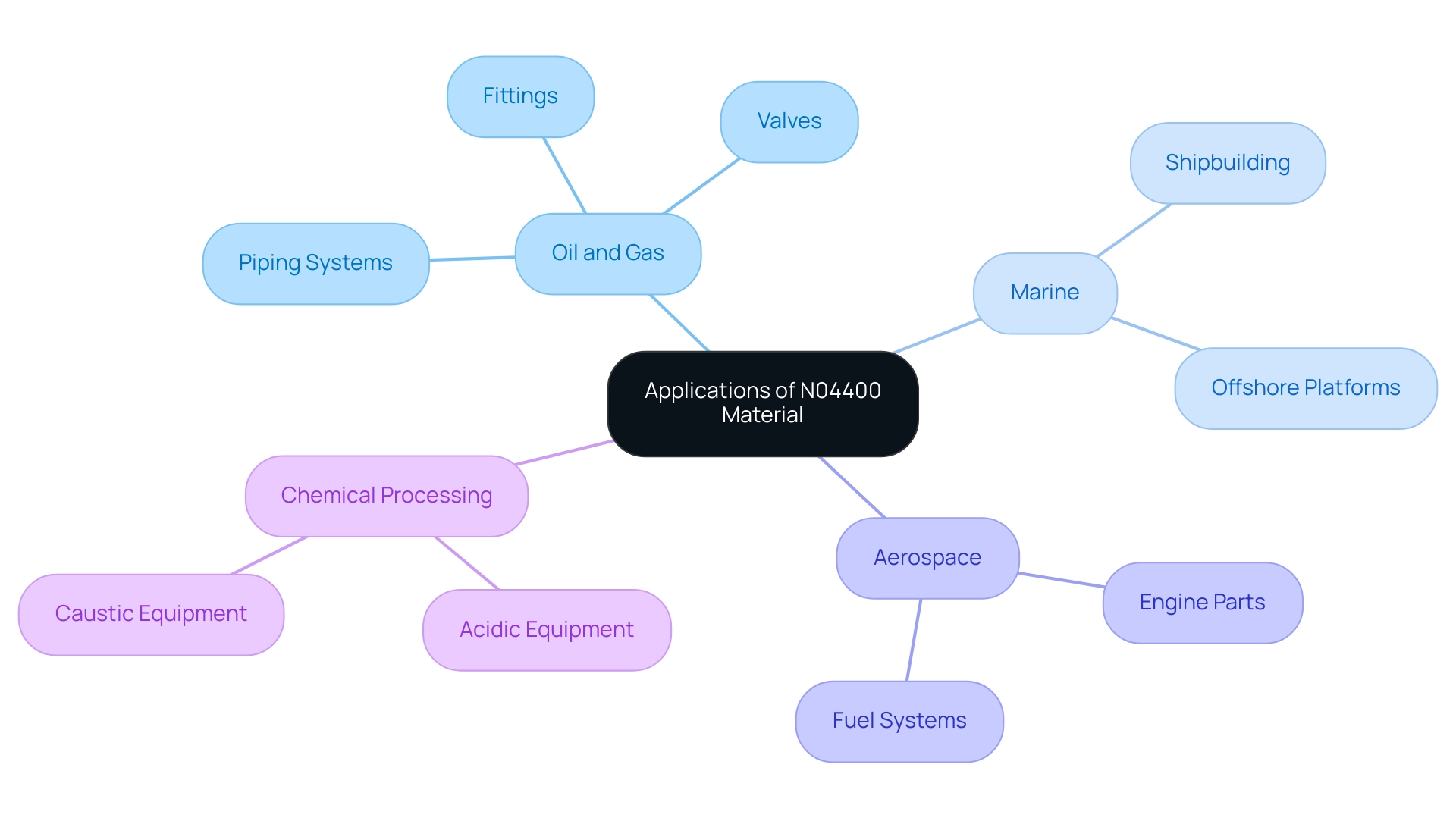
Manufacturing and Processing Techniques for N04400 Material
This material can be effectively processed through various techniques, notably forging, machining, and welding. Forging plays a critical role in enhancing the mechanical properties of n04400 material, as it refines the grain structure, leading to increased strength and ductility. This enhancement is essential in contexts where performance under stress is paramount.
The unique characteristics of copper nickel alloys, such as their superior corrosion resistance in marine environments compared to stainless steel, make them ideal for components in marine engineering, offshore platforms, and seawater piping systems. Additionally, their applications in automotive systems for brake lines and hydraulic systems, electronics, heat exchangers, and even coinage showcase their versatility. Machining is frequently employed to create exact components; however, it is crucial to use suitable cutting tools to avoid work hardening, which can undermine the integrity of the substance.
For joining n04400 material components, welding techniques such as TIG welding are particularly suitable. It is essential to preheat the n04400 material adequately and select proper filler options to maintain the corrosion resistance and preserve the mechanical integrity. Furthermore, the DOMADIA Nickel Molybdenum Iron Alloy stands out for its exceptional strength, corrosion resistance, and thermal stability, making it a preferred option for critical uses.
Procurement managers should also be aware of common defects in Ni-base weldments, such as porosity, which can arise from contamination during the welding process. The Submerged Arc Welding (SAW) process is generally not recommended for Ni-base alloys due to high heat input and slow cooling, which can promote cracking. Therefore, understanding the importance of joint design, cleanliness, and heat input, as highlighted in the case study ‘Welding Considerations for Ni-Base Alloys,’ is vital for ensuring quality welds.
These insights are crucial for procurement managers, as they ensure that sourced items meet the specific requirements of various applications while retaining their essential properties.
Standards and Compliance for N04400 Material
In the acquisition of specific resources, it is essential for managers to navigate the landscape of applicable standards and compliance requirements effectively. The n04400 material is governed by several key ASTM standards, including:
- ASTM B164, which covers bars
- ASTM B165, which pertains to pipes
These standards are critical in dictating the specifications and quality expectations for the substance.
Notably, the elongation for spring temper is a minimum of 2%, a crucial specification that affects the performance in various applications. Furthermore, adherence to ISO 9001 standards is often a prerequisite for suppliers, as it ensures the implementation of robust quality management practices. Such compliance with n04400 material is not merely a regulatory formality; it plays a vital role in ensuring the reliability and performance of the substance.
To mitigate risks associated with product failures and non-compliance, procurement managers must diligently verify that suppliers provide the necessary documentation and certifications demonstrating adherence to these standards. It is also vital to note that Ulbrich Stainless Steels and Special Metals, Inc. disclaims any liability for damages arising from the use of the information provided in this document. Understanding this limitation, along with the case study on the limitations of liability and disclaimer of warranty regarding the use of information about Monel 400 wire, emphasizes the importance of being aware of the context and limitations of the information used in procurement decisions.
This proactive approach not only safeguards the procurement process but also enhances the overall integrity of the supply chain.
Cost Considerations and Supplier Selection for N04400 Material
Acquisition of the n04400 material necessitates a meticulous evaluation of both direct costs and the total cost of ownership. Given that prices for the alloy are susceptible to fluctuations influenced by global nickel and copper market trends—recently, nickel prices have seen a rise of approximately 15% over the last quarter, while copper prices have increased by about 10%—it is imperative for procurement managers to remain vigilant regarding market conditions. This awareness allows for better forecasting and budgeting.
When it comes to selecting suppliers for Monel 400, critical factors such as lead times, reliability, and service quality must be carefully considered alongside pricing. Establishing long-term partnerships with suppliers can yield advantageous pricing agreements and enhanced service priority. For instance, CTS Tubes offers additional services such as monthly price updates for stainless steel tubes and assistance in factory inspections, which can significantly facilitate the purchasing process.
To further optimize procurement costs, implementing a competitive bidding process can stimulate suppliers to present their most competitive prices while ensuring adherence to quality standards. Such strategic measures not only facilitate informed decision-making but also contribute significantly to cost efficiency in the procurement process. Moreover, understanding the chemical composition of n04400 material, which has a minimum nickel content of 32%, is critical for determining its suitability for various applications, reinforcing the need for careful supplier selection.
Conclusion
The exploration of N04400, or Monel 400, reveals its unparalleled mechanical properties and resistance to corrosion, making it a critical material across various industries. Its unique composition, featuring a balanced mix of nickel and copper, ensures exceptional tensile strength and ductility, essential for applications in challenging environments such as:
- Oil and gas
- Aerospace
- Marine engineering
Understanding these properties equips procurement managers with the knowledge necessary to make informed material sourcing decisions.
The article further underscores the diverse applications of Monel 400, highlighting its integral role in manufacturing equipment that withstands harsh conditions, from marine fixtures to chemical processing equipment. The manufacturing processes, including:
- Forging
- Welding
are pivotal in enhancing the material’s performance, emphasizing the importance of proper techniques to maintain its integrity.
Compliance with industry standards and careful supplier selection are also crucial components of effective procurement strategies. By adhering to ASTM standards and ISO certifications, procurement managers can ensure they source high-quality materials that meet rigorous operational demands. Moreover, staying informed about market fluctuations and establishing strong supplier relationships can lead to better pricing and service, ultimately enhancing cost efficiency.
In summary, the strategic understanding of Monel 400’s properties, applications, and compliance standards equips procurement professionals to navigate the complexities of sourcing this versatile alloy. By prioritizing these insights, stakeholders can drive operational success while ensuring long-term reliability and performance in their projects.

